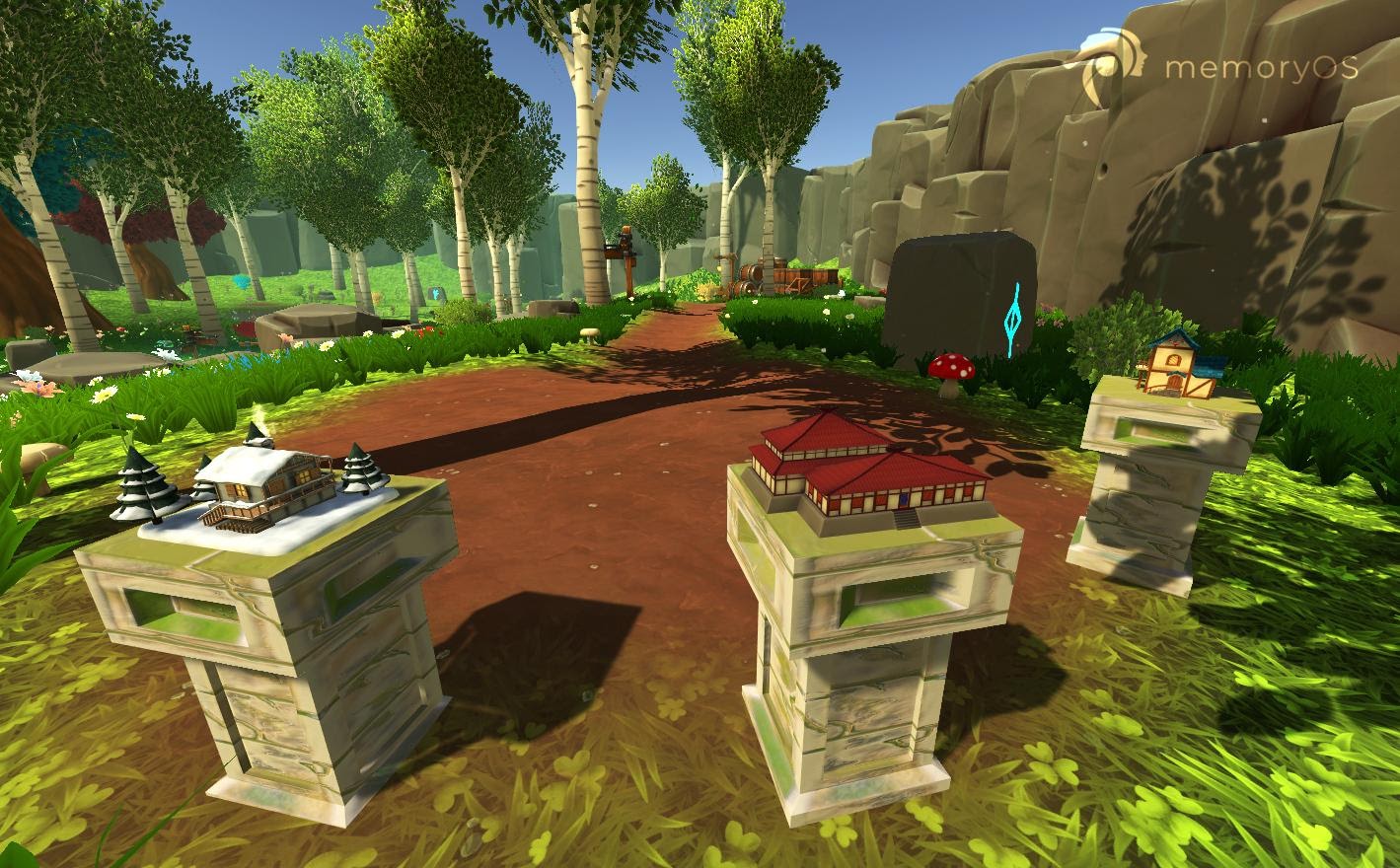Here at memoryOS, we have a saying we repeat often: “Most of the Kickstarter happens before the actual Kickstarter.”
Preparation is the key. But even if you understand that most of the work is done in advance, you should still prepare yourself for some sleepless nights after the launch date. The usual startup mantra will apply to your crowdfunding campaign just as well: Measure, analyze and adjust along the way.
As you may know, crowdfunding fits some B2C products better than it does others. So to give you our product context here, memoryOS is a gamified app that teaches memorization skills with the help of virtual mind palaces and interactive microlessons taught by our co-founder, two-time World Memory Champion, Jonas von Essen.

Image Credits: memoryOS (opens in a new window)
Before becoming the most funded app on Kickstarter and getting it 6,400% funded (and carrying it further to the Indiegogo platform right after), we spent countless hours researching down the rabbit hole of crowdfunding tips and tricks. We also had calls with several top-tier crowdfunding project creators who were kind enough to answer our questions and share bits of knowledge from their experience.
We’re sharing our approach (and secrets) to building a successful crowdfunding campaign because we know just how tough it can be to launch your own product. So here is a complete 10-step guide:
Find a unique idea
You should have a unique idea for a product that would solve at least one problem for your target audience. The proven approach is to set two major hypotheses right at the start and then work on getting them tested:
- Does your product work and solve the problem as intended, and is it better than what’s out there? This is usually referred to as the “proof of concept” stage.
- Are there enough people who are willing to pay for your product for you to build a sustainable business?
You will need to build a base prototype to test the first hypothesis and, if it works, you can then work on turning it into an MVP or a short demo version for your future commercial product. You can then get people to test it for free and prepay for the full version.
Getting people to actually back their interest with their wallet means you already have customers, not merely enthusiasts, and it significantly increases the chances of a successful project.
Yes, it’s important that you get people to pay a minimum reservation deposit at this point and receive their commitment to pay the remaining amount for the full product later on. Getting people to actually back their interest with their wallet means you already have customers, not merely enthusiasts, and it significantly increases the chances of a successful project.
Get user feedback
As soon as you have something to test, conduct short surveys to better understand your customers by gathering and analyzing the reasons why and for what purpose(s) they would want your product.
Here at memoryOS, we called the first couple thousand of our leads and had many insightful conversations to help us connect to our audience on a more personal and emotional level.
Once you have a demo or prototype for the users to test, make sure to add a feedback form right at the end of their experience (or gather feedback using Google Forms for surveys, or via email inquiries).
Organize community building and lead-generation campaigns
Every single crowdfunding campaign that made it big had an army of fans before the actual launch. All the six- and seven-figure campaigns you will find were preplanned.
That is also why serial project creators tend to do better each time they release another product on a crowdfunding platform. Generating leads and building a community with them should be your top priority.
We’ve mainly used Facebook and Instagram conversion ads to drive traffic to our landing page.
As mentioned before, we also called many of our initial leads and then also used SMS automation and bulk notifications to help drive conversions. The open rate of SMS is several times higher than email, but since it can get quite costly, we would suggest at least sending one text message right at launch (including your campaign’s page URL) and one an hour or two before the end of your campaign.
Emails can be sent more regularly to deliver major updates before launch to keep your audience warmed up and let your product stay top of their mind, as well as weekly updates with a call to action to pledge if they haven’t yet during the campaign.
Set up optional VIP memberships for your leads
This is the secret sauce behind a successful crowdfunding campaign. Right after the free sign-up, leads are redirected to another landing page with an offer to pay a small reservation deposit that gets them a VIP membership inside of a private early adopters group on Facebook (which has a list of its exclusive benefits). This also secures the lowest Super Early-Bird pricing for our app’s lifetime plan.
VIP leads are 10 to 20 times more likely to pledge than regular leads during your crowdfunding campaign since they’ve already shown their support with their wallets.
This small deposit should be fully refundable, and we suggest you test the reservation amount from $1 to $9. By starting low, you can measure whether your conversion rate starts to drop at higher amounts.
Our top-tier lifetime plan reservation deposit was priced at $9, which helped us generate a bit of extra revenue to help cover some of the ongoing expenses.
Understand your key metrics, goals and redline ROAS
There is no point in moving further if your financial forecasts (using conservative conversion rates) are not making your team confident that you will very likely make it a six-figure campaign just with the help of your existing community.
The conservative conversion rates are: 2% or your non-VIP leads will pledge at your AOV; 20% of your VIP leads will pledge the amount they’ve committed to.
With this in mind, make sure to create a spreadsheet that you will update daily with your ad spend and the number of specific VIP and non-VIP leads to monitor the estimated ROI. You can also add 20% on top of that for the organic pledges that will come from the platform itself and deduct platform and transaction fees.
That will enable you to scale your ads and give you an understanding of where you are in terms of the estimated amount your crowdfunding campaign will be funded with. It’s better to delay the launch date and feel more confident about your estimated outcome than launch too early and get disappointing results.
Develop your product, team and community continuously
It goes without saying that you should constantly grow in all directions and communicate these improvements to your community during the pre-launch, live and post-launch phases of your crowdfunding campaign.
Your core team matters the most, so make sure they are on this journey with you mainly for the idea and experience itself and that they agree to work in intense bootstrap mode until you start generating profits.
Make a project video
A few days into the campaign, we found a video posted on YouTube reviewing and criticizing our campaign page and our eight-minute long video.
Kickstarter dashboard provides the average watch rate of the main video. We thought ours wasn’t high enough, so two weeks into the campaign, we decided to make a shorter version and placed the original full version at the top of the Story section.
That did improve the watch rate a bit. So, if possible, try to keep your video at around the three-minute mark right from the start.

Image Credits: memoryOS
Optimize your Kickstarter campaign page
The primary advice here is less text, more visuals. Remember that people are on auto-scroll mode these days, so make sure to let your image, gif and video content speak strongly.
As with the video, make sure to review many successful campaign pages and write down all the sections you need to include.
It’s okay to spend on marketing, ads and PR
When running ads, take the time to continuously test video and banner image creatives since they can significantly impact your results.
For the pre-launch phase, your Facebook pixel setup can help optimize for purchases, which is the best way to go about it. However, we went a step further and integrated an advanced ad tracking software called Hyros that showed the exact attributions and enabled us to scale our ads.
Make sure to allocate some marketing budget for the live phase of the campaign as well. There are several experienced Kickstarter agencies out there. We worked with Jellop, and if you decide to go this route as well, it’s better to reach out to them several weeks before your launch date.
If your ROAS in the first few days is good, you can try asking them to connect you with the SprintCF fund to provide a loan for your ad budget, which is also a nice additional option.
As for affiliate programs, you can register with Kickbooster, and a few days into the campaign, share the link with your community to help promote your project and potentially get a cut from the pledges they help bring in.
It also won’t hurt to reach out to influencers if you know any who are interested in a commission-based promotion. We didn’t get much success with influencers for our affiliate campaign, so we wouldn’t suggest wasting too much time on this.
Regarding PR, we had a small in-house team preparing press releases and actively reaching out to journalists directly and with the help of tools like Prowly. We didn’t see much success with it, but persistence does pay off and eventually, some people will be interested in seeing your campaign develop. You may also get coverage from a few publications during or after your campaign.
View your affiliate and PR efforts as something that may potentially bring a small bonus to your campaign and your website’s SEO. But don’t count on it, and don’t spend too much of your resources on it either.
Other things to keep in mind
In addition to your core team, make sure to gather experienced advisers to help your startup succeed. Plan things out a few steps ahead: What will happen after your Kickstarter campaign? Will you move to Indiegogo in-demand and then later do an equity crowdfunding round? Or will just Kickstarter be enough before you are ready to start selling your product directly to your customers?
Preparing and running a decent crowdfunding campaign (and startup in general) is more challenging than you may think, so be wary of the possible burnouts and do tend to your mind-body needs. (Did I mention the sleepless nights?)
Most importantly, be honest with yourself: Does your startup’s mission completely align with your inner mission? A good question to ask yourself is — if you knew for sure you only have a few years left to live, would you continue doing it with as much passion? If the answer is a solid yes, and you have some prior business experience, then you should reach your goal. As corny as it might sound — don’t give up, just keep going, and you will make it.
Good luck!
